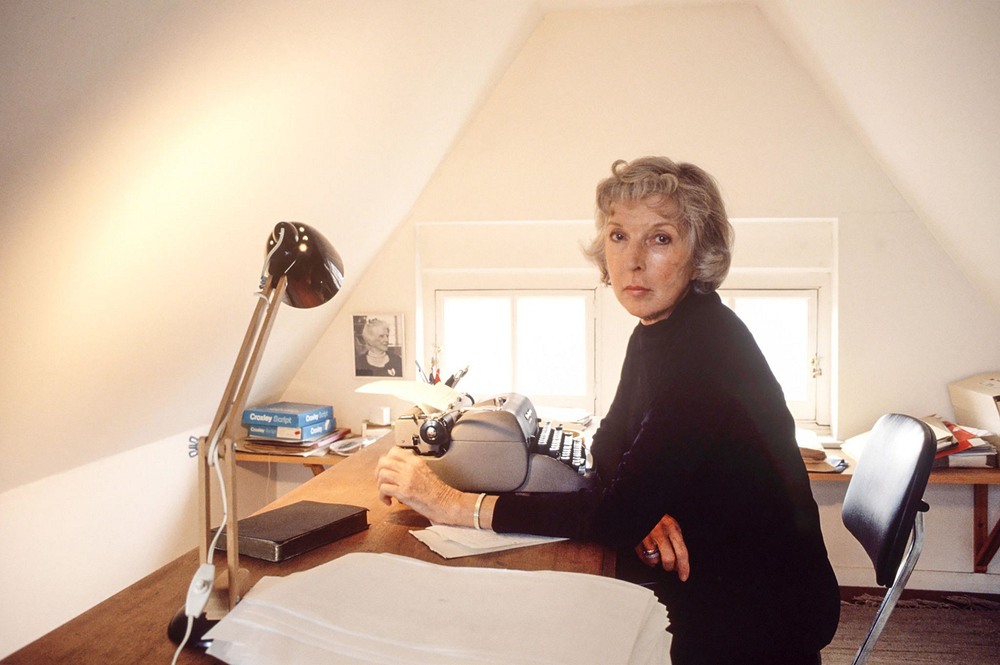Martha Gellhorn, The Only Woman Who Landed in Normandy on D-Day

On the eve of the Normandy landings in June 1944, there were over a thousand war correspondents all over Europe reporting back to the millions of British and Americans back home. A handful of these journalists and photographers were also women. Unfortunately, the government had prohibited women from going to the front lines, so while these women correspondents could cover stories from the war zone, they could not go in with the troops.
Understandably, many female war correspondents were not happy with the ban.
“It is necessary that I report on this war," wrote Martha Ellis Gellhorn in an angry letter to military authorities. “I do not feel there is any need to beg as a favour for the right to serve as the eyes for millions of people in America who are desperately in need of seeing, but cannot see for themselves.”
Martha Ellis Gellhorn was an American war correspondent for the Collier’s magazine. Some of you may know her as the third wife of Ernest Hemingway, but her accomplishments as a journalist far outshine her brief marriage to the novelist.
Gellhorn began her career as a journalist during the Great Depression, working as a Field Investigator for the Federal Emergency Relief Administration (FERA) created by Franklin D. Roosevelt to report on the impact of the Depression on the country. Later, she travelled to Spain to cover the Spanish Civil War in 1937. During this period she met Ernest Hemingway, who was also in Spain as a correspondent. They married in 1940, she becoming Hemingway’s third wife, and Hemingway becoming Gellhorn’s second husband.

Martha Gellhorn and Ernest Hemingway
Gellhorn and Hemingway’s marriage was troubled from the start. Hemingway refused to let go off his second wife even when both of them were seeing each other, and Gellhorn’s long absences during her reporting assignments irritated Hemingway. When D-Day approached, their marriage was already dead in the water. To get even with Gellhorn, Hemingway got himself accredited as the correspondent for Colliers, the magazine Gellhorn worked for, blocking any chance Gellhorn might have of getting to the front lines.
But Martha Gellhorn was not ready to bow out.
On the night of June 6, 1944, before the ships departed for Normandy, Gellhorn made her way to the waterfront on the pretext of interviewing the nurses aboard a hospital ship. Once on board, she hid herself in the bathroom. Gellhorn knew that if she got caught, she would lose her accreditation and might even get deported back to America. Still, to witness the great invasion was worth the risk. Gellhorn remained in her hideout for several hours and only emerged when the ship was well on her way to France. Later that night, after the troops had landed and the massacre on the beach was finally over, Gellhorn sneaked ashore with a couple of doctors and medics as a stretcher bearer to collect the wounded. In the chaos of the war, nobody gave a damn that Gellhorn was a woman.

“Taxis to Hell – and Back – Into the Jaws of Death,” one of the most famous photograph of the D-Day landing by Robert F. Sargent
Martha Gellhorn became the only woman to land in Normandy the same day the troops did. Other women followed, but much later. The first batch of women—members of the United States Women’s Army Corps—landed in Normandy thirty-eight days later.
Soon after Gellhorn had filed her story to Collier’s, the military police arrested her. They took away her credentials and transported her to a nurse’s training camp outside London. Gellhorn escaped from the camp by convincing a British pilot to fly her to Italy.
“I followed the war wherever I could reach it,” Gellhorn recalled.
Martha Gellhorn continued covering conflicts her country was involved in. She covered the Vietnam War and the Arab-Israel conflicts in the 1960s and 70s. She was still out at the front reporting the civil wars in Central America at the age of seventy, and incredibly, United States’ invasion of Panama in 1989 at the age of eighty-one. It was only when war came to Bosnia that she decided to quit, announcing that she was “too old” and not “nimble” enough for war anymore.
As Gellhorn entered the late eighties, her eyesight began to fail and she became almost completely blind. She was also suffering from ovarian cancer that had spread to her liver. She committed suicide in 1998, at the age of ninety, by swallowing a cyanide capsule.


Martha Gellhorn in 1978, at the age of seventy.
Martha Gellhorn, The Only Woman Who Landed in Normandy on D-Day
 Reviewed by Your Destination
on
June 03, 2019
Rating:
Reviewed by Your Destination
on
June 03, 2019
Rating:
 Reviewed by Your Destination
on
June 03, 2019
Rating:
Reviewed by Your Destination
on
June 03, 2019
Rating:
No comments